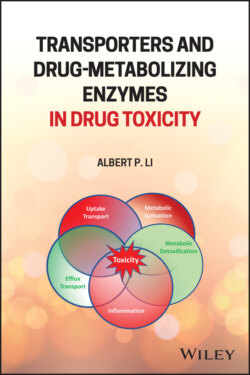Читать книгу Transporters and Drug-Metabolizing Enzymes in Drug Toxicity - Albert P. Li - Страница 63
3.5.1 Drug Metabolism and Toxicity
ОглавлениеFlucloxacillin has been shown to be metabolized primarily by CYP3A4, CYP3A7, and CYP2C9 in hepatocytes to 5‐hydroxymethyl flucloxacillin [98, 99], a metabolite cytotoxic to biliary epithelial cells, resulting in hepatotoxicity [99–101]. Flucloxacillin has been shown to be an inducer of CYP3A4 both in vitro in hepatocytes, and in clinical studies [102], suggesting that prolonged treatment of patients may lead to increased CYP3A4 induction, resulting in a higher rate of formation of the cytotoxic metabolite. Plasma from patients exposed to flucloxacillin has been found to contain human serum albumin with modified lysine residues as a result of the covalent binding with 5‐hydroxymethyl flucloxacillin, leading to the hypothesis that immune reaction to the neoantigens may be one of the key mechanism of hepatotoxicity [103].
